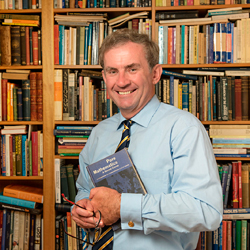What is Physics?
/It is surprising that many students who are studying physics have never really thought of what physics actually is. A common answer given is that "physics is the study of the universe". On a smaller scale the common branches of physics are mechanics, thermodynamics, electricity and magnetism, relativity, quantum physics and nuclear physics. What do these areas have in common? Each of these areas studies something happening in nature, such as an apple falling to the ground, two magnets pushing on each other or the sun emitting light. To describe how nature behaves we use the language of nature, and this is mathematics. Combining all of these threads together we can define physics as the mathematical study of phenomena occurring in nature. The great physicist Paul Dirac commented on the association between mathematics and the natural world
“The mathematician plays a game in which he himself invents the rules while the physicist plays a game in which the rules are provided by nature, but as time goes on it becomes increasingly evident that the rules that the mathematician finds interesting are the same as those which nature has chosen”
